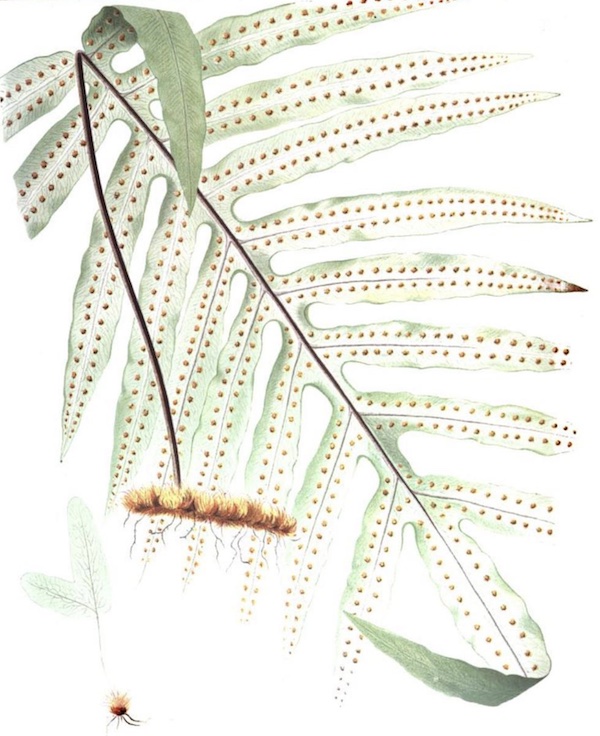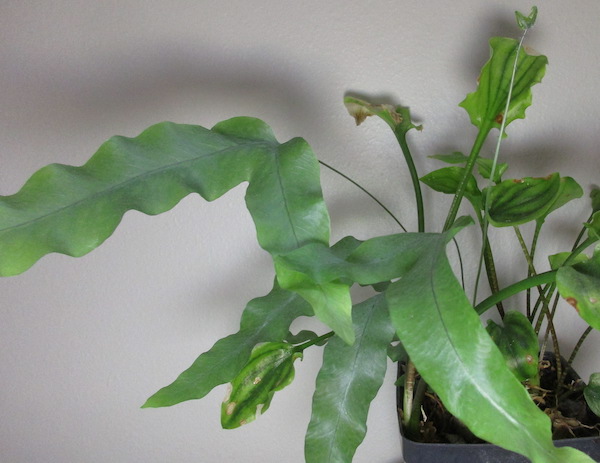Plant of the Month: August 2022
|
| Rabbit's-foot Fern |
| Phlebodium aureum (L.) J. Sm. 1841 |
| = Polypodium aureum L. 1753 |
POLYPODIACEÆ; Polypody Family
|
| This fern has popped up wild twice as a weed in my houseplant collection, and thereby has earned itself a little article. In 1753, it was named Polypodium aureum. Then in 1841, the split genus Phlebodium was created. So according to whether you lump or split, you may put it in one genus or another. |
| If you choose Phlebodium, that genus has 3 to 5 species, of the New World tropics and subtropics If lumped into Polypodium, that genus can have anywhere from 60 to 110 species depending on lumping or splitting. Its split-off genera grow mainly in warmer climates than the original Polypodium species. Both Phlebodium and Polypodium grow naturally on trees, building roofs, walls, and gutters, more than on the ground. Seattle's native Licorice fern is a Polypodium. My weedy houseplant species grew from microscopic spores, in pots of other plants. You might compare them to stowaways on a ship. But this species is grown intentionally indoors as an ornamental, being attractive and easy. It is even eaten sparingly. |
| In the wild, it ranges from SE USA to Argentina. It is of hybrid origin. This creeping fern, usually epiphytic, is remarkable for its fuzzy plump golden-brown rootstock (rhizome), and long-stalked fronds. Its forms with bluish fronds are even more prized ornamentally. Its spores also are golden in color. It has been grown in Europe since 1742. Its fronds are leathery, to 48 inches long and half as wide. Cultivars include: 'Blue Dwarf', 'Cristatum', 'Glaucum', 'Mandaianum' (crisped blue-fern), 'Mayii' = 'Undulatum', 'Mexican Tasselled'. |
| Much medicinal usage is recorded for this fern. It is sometimes added to corn beer (tesguino) in Mexico; The Tico Ethnobotanical Dictionary states its rhizomes are edible. One would need to get around all the golden scales to access the starch within. But a big plant will have a plum rootstock about an inch thick. It is astringent, at least raw, so I guess it would be boiled or roasted. |
| My wild baby fern has simple and barely divided fronds. I shall not let it grow large because I lack the space. |
Other English names are: Bear's-foot fern. Bear's-paw fern. Hare's-foot fern. Golden fern. Golden Serpent fern. Cabbage-palm fern. Golden polypody. Goldfoot fern.
Back |

from The Ferns of North America by Daniel Cady Eaton (1879)
|

Phlebodium aureum in a greenhouse ; photo by ALJ
|

Phlebodium aureum weed in my pot of Drimiopsis maculata ; photo by ALJ
|
|
|

